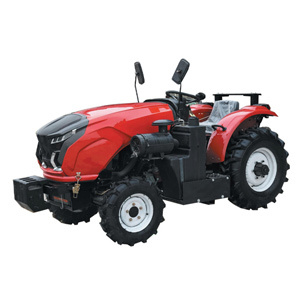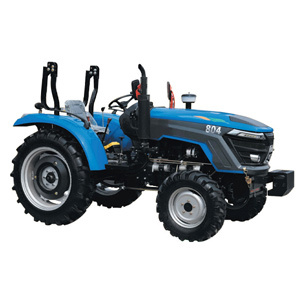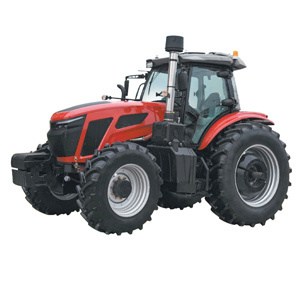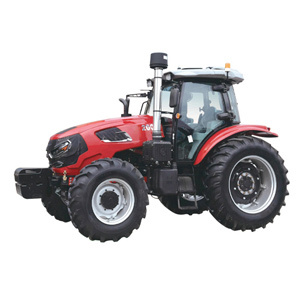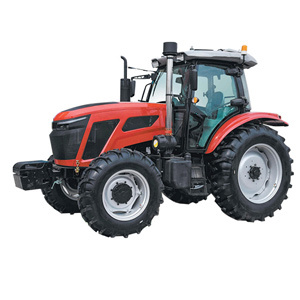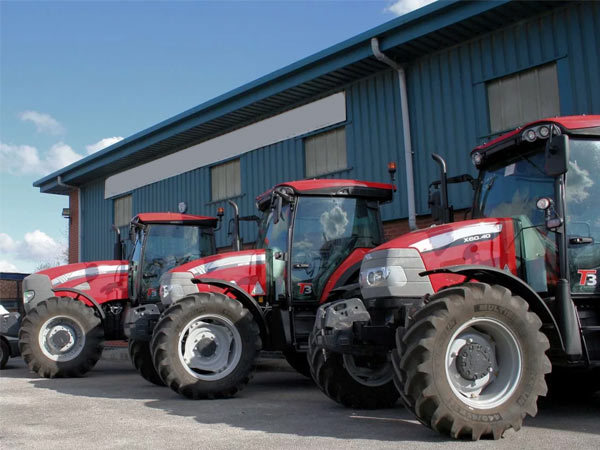Providing you with a one-stop solution for tractors
Waterlogged Fields or Hard Drylands? How to Configure Tractor Parameters for Different Extreme Conditions
Release time:
2025-11-20
A "one-size-fits-all" tractor is a myth, especially when facing the polar opposites of waterlogged paddy fields and compacted drylands. These environments present unique challenges that demand specific configurations. Choosing the wrong setup leads to poor performance, rapid wear, and potentially getting stuck. This guide decodes the key parameters you must prioritize to conquer these two distinct battlegrounds.
Scenario 1: Conquering the Waterlogged Paddy Field
The primary enemies here are buoyancy, traction loss, and corrosion.
Core Configuration Principle: Maximize Flotation & Traction.
Parameter Configuration Guide:
Drivetrain: Non-Negotiable MFWD/4WD
Why: Power to the front wheels is crucial for pulling yourself through deep, slippery mud and for steering effectively. 2WD is not an option.
Tires: The "High-Clearance" Grip
Type: High-Lug (R1) Paddy Tires are essential. They feature extra-long and widely spaced lugs that penetrate deep into the mud to find solid ground and prevent mud packing.
Size & Inflation: Opt for larger diameter and narrower width tires. This increases ground clearance ("belly clearance") to prevent the tractor from getting high-centered on mud, and cuts through the mud layer more effectively. Operate at very low pressure (8-12 PSI).
Weight & Ballast: The Traction Paradox
Strategy: Lighter is better. The goal is to have a high power-to-weight ratio. Excessive weight causes the tractor to sink, increasing rolling resistance and burying the axles. Use just enough cast iron weights for adequate traction without causing sinking.
Engine & Air Intake: Breathe Easy
Air Intake: A high-mounted, vertical air intake stack is critical to prevent water ingestion when crossing deep sections.
Engine Guard: A full underside skid plate protects the oil pan and transmission housing from submerged obstacles.
Scenario 2: Dominating the Hard, Compacted Dryland
The primary enemies here are immense draft resistance, extreme shock loads, and soil compaction.
Core Configuration Principle: Maximize Weight, Traction & Durability.
Parameter Configuration Guide:
Weight & Ballast: The "Anchor" Principle
Strategy: Heavier is better. Traction is directly proportional to weight. Maximize ballasting with liquid-filled tires (at least 75% fill) and front/rear cast iron weights. This ensures the horsepower is transferred into pull, not wheel slip.
Drivetrain: MFWD/4WD with Robust Axles
Why: MFWD is essential for pulling heavy implements. The focus here shifts to the axle and final drive strength. Look for specifications indicating large-diameter planetary final drives and forged axle housings to withstand the constant high torque and shock loads from hitting hard spots.
Tires: The "Footprint" Grip
Type: Standard R1 (Ag) radials are excellent. Their flexible sidewalls create a larger contact patch for better grip.
Inflation: Adjust pressure for the task. For heavy tillage, lower pressure (12-15 PSI) increases the footprint. For transport, increase pressure to the sidewall maximum to reduce rolling resistance and heat buildup.
Hydraulics & Linkage: The Muscle to Lift
Lift Capacity: Hard ground often requires larger, heavier implements. Ensure the three-point linkage lift capacity is high enough to handle them comfortably.
Hydraulic Flow: Adequate hydraulic flow is needed for responsive control of heavy rear implements and front attachments.
The Configuration Comparison Table at a Glance:
| Configuration Parameter | Waterlogged Paddy Field | Hard Dryland |
|---|---|---|
| Core Goal | Flotation & Mud Traction | Weight & Draft Pulling |
| Drivetrain | Mandatory MFWD/4WD | Mandatory MFWD/4WD |
| Tire Type | High-Lug (R1) Paddy | Standard R1 Radial |
| Tire Strategy | Narrow, Large Diameter | Standard Width, Optimized Pressure |
| Ballast Strategy | Minimize (Avoid Sinking) | Maximize (Liquid Fill + Weights) |
| Critical Spec | High Air Intake, Ground Clearance | Axle/Final Drive Strength, Lift Capacity |
RELATED BLOG

